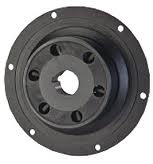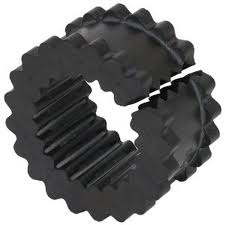

Supreme Rubber UAE
sales@supremerubberuae.com
+971 7 2432780
PO Box: 14581, Ras Al Khaimah Ras Al Khaimah - 00000
In the world of mechanical engineering and machinery, the integration of various components in a system is crucial for its efficient and smooth operation. One such component, often overlooked yet vital, is the rubber coupling. This article aims to shed light on the importance of rubber couplings, their types, applications, and benefits in the industrial sector.

It is a type of mechanical coupling used to connect two shafts in a motor or mechanical system. It is designed to transmit torque while accommodating misalignment and reducing vibration and noise. Made from rubber, these couplings are flexible, durable, and resistant to various environmental factors.
Rubber couplings are used in a wide range of industrial and mechanical applications. Some of these include:

There are several types of rubber couplings available, each designed for specific applications and requirements:
The utilization of rubber couplings in mechanical systems comes with a host of benefits:
Choosing the appropriate rubber coupling involves considering several factors:
In conclusion, the rubber coupling plays a pivotal role in the efficient and effective operation of various mechanical systems. Its ability to accommodate misalignment, reduce vibrations, and resist harsh environmental conditions makes it an indispensable component in a wide array of industries. From automotive to manufacturing, rubber couplings ensure the longevity and reliability of machinery, contributing significantly to the smooth operation of many industrial processes. Understanding the types, applications, and benefits of rubber couplings is essential for engineers, technicians, and industry professionals to optimize the performance of their mechanical systems.